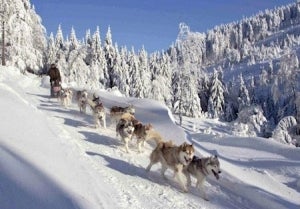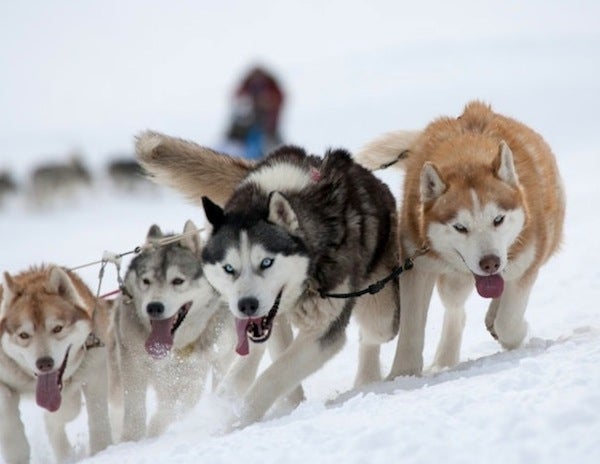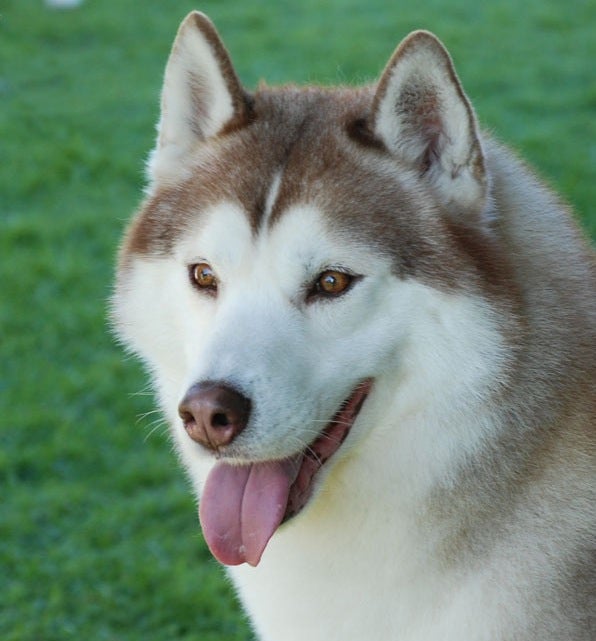By Michael Jennings, from the April 2016 AKC Gazette
Michael Jennings is an AKC conformation judge, a longtime breeder and exhibitor, and the author of three books on the Siberian Husky.
 I’m often asked how I choose my “keeper” puppies, and my standard, wiseguy answer is “the same way I choose my winners in the ring, but because they’re much smaller, it’s more complicated and takes longer.”
I’m often asked how I choose my “keeper” puppies, and my standard, wiseguy answer is “the same way I choose my winners in the ring, but because they’re much smaller, it’s more complicated and takes longer.”
Of course, the process really begins with choosing the breeding pair who will be the parents. There’s a certain kind of body proportion and type that I want that includes both athleticism and aesthetic appeal: approximately equal-length scapula, humerus, pelvis, and femur, with radius/ulna about 20 percent longer and tibia/fibula about 30 percent longer, in an animal about 9–10 percent longer than tall and about 20–25 percent longer in leg than in depth of chest, along with good, strong feet; and then lovely type and temperament. And I choose the parents accordingly.
When it comes to the pups: Prior to about 6 weeks, I pay attention only to type and temperament, along with noticing who gets out of the whelping box first or just seems generally quicker and nimbler (and asking myself if it is only because that one is the smallest or lightest).
From about 6 weeks on, I am watching movement and overall coordination, muscle tone, proportions, and, above all, or including all, which puppy simply makes the most of itself, has that poise, whether moving or standing, the appearance of whole-body ego that says, “I’m here and I’m ready, the world is my oyster.”
I have never much believed in the old saw you hear at judges’ dinners, that “Ch. Sir Prance a Lot was ‘simply asking for it’”—meaning a ribbon—but if it has any truth it is in the above description, the dog who says, “Look at me.”
Of course there are certain faults (a straight shoulder or large chest) that can say, “Look at me,” but a Siberian should be an animal without excess whose essence is movement and the ability to stay warm in a very cold climate: thus soundness and type in a hand-in-glove relationship.
And there are a few other things I look for from an early age:
Is the ribcage truly oval and tapering? Is the sternum bone about level with the point of shoulder, and fairly prominent? Is the neck strong to the feel, and reasonably long (usually indicating good shoulders)? Is the loin fairly short, and the back strong? Is there a noticeable slope to croup and upper arm? I like to see those almost parallel lines—one in the lower aspect of the front assembly, the other at the top of the rear assembly. And, of course, throughout I am noting the subtler features of head type: ear-set, eye shape and set, and the dimensions and taper of skull.
Beyond that, I believe it’s useful to watch the pups for long periods of time, puzzling out the nuances of structure and temperament—and to know what you want from a given litter, the reason for doing the breeding in the first place.
It is also probably good to remember, as Peggy Koehler once said, “You’re looking for the best puppy in the litter, not the best puppy in the world.” —M.J.
All photos courtesy Michael Jennings and Elisabeth Heis
For more information on the breed, visit the website of the Siberian Husky Club of America.








